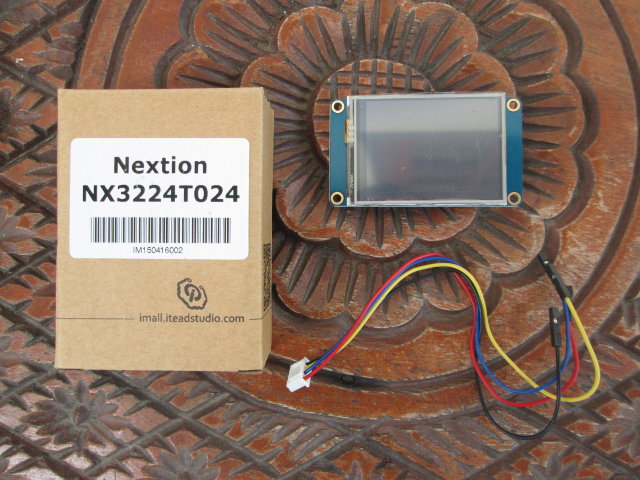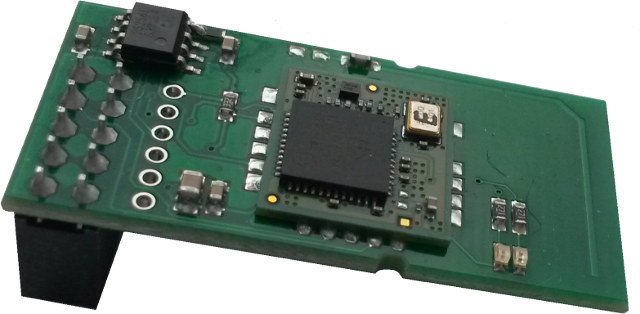Pi-Top, a laptop kit based on Raspberry Pi 2 board and a 13.3″ display, and which cost about $299.99 with the board, and had a successful crowdfunding campaign despite the price nearly matching equivalent laptops on the market. CEED is now back on Indiegogo with pi-topCEED desktop computer also based on a Raspberry Pi 2 board and a 13.3″ display, but which much more aggressive pricing, as the kit could be yours for $99 with the board, or $70 without, and shipping was included to the few countries I checked out. pi-topCEED Specifications: SoC – Broadcom BCM2836 quad core Cortex A7 processor @ 900MHz with VideoCore IV GPU System Memory – 1GB LPDDR2 Storage – micro SD card slot Display – 13.3″ HD LCD screen screen with eDP 1.2 interface; 1366×768 resolution; 262K colors; 60Hz refresh rate; 3W power consumption. Video & Audio Output – HDMI (connected to display board […]
Run x86 Linux and Windows applications in Raspberry Pi and other ARM Linux Devices with Exagear
A few weeks ago, I finally decided to buy a Raspberry Pi 2 board as it could always be useful for some testing, at least for comparison purposes. I ended up buying it from Ebay for $40, as it’s $3 to $5 more expensive locally. Nevertheless, I was not sure what I’ll use it first for, but after seeing a tweet for Exagear Desktop software that allows ARM boards to run x86 Linux or Windows applications, the latter through wine. The program is available for Raspberry Pi, Raspberry Pi 2, and ARMv7 devices for $19.95 to $29.95. I asked for a version for testing purposes, and I was given a Google Drive link to download Exagear for Raspberry Pi 2, as well as a 3-month trial key. Installation is very easy. I started by downloading and installing Raspbian Jessie the usual way on a 32GB micro SD card. It went […]
Orange Pi Plus 2 Allwinner H3 Board Includes 2GB Memory
Shenzhen Xunlong has made yet another Allwinner H3 board. It’s called Orange Pi Plus 2 with basically the same specifications as Orange Pi Plus, but the layout has been modified with a slightly wider board, and the RAM upgraded from 1GB to 2GB. Orange Pi Plus 2 specifications: SoC – Allwinner H3 quad core Cortex A7 @ 1.2 GHz with ARM Mali-400MP2 GPU up to 600 MHz System Memory – 2GB DDR3 Storage – 8GB eMMC, micro SD card slot, SATA interface (via a USB to SATA chip), Video Output – HDMI, AV port Audio I/O – HDMI, AV port, on-board microphone Connectivity – 10/100/1000M Ethernet, 802.11 b/g/n Wi-Fi (Realtek RTL8189ETV) USB – 4x USB 2.0 host ports, 1x micro USB OTG port Camera – CSI Interface Expansions – 40-pin Raspberry Pi Model A+/B+ (mostly) compatible header Debugging – 3-pin UART header for serial console Misc – IR receiver; Power, […]
$5 Add-on Board for Raspberry Pi Supports Arduino Shields and Grove Modules (with Caveats)
If you have several Arduino shields, you can use them on your Raspberry Pi B+/ Pi 2 board with Cooking Hacks’ Raspberry Pi to Arduino shields connection bridge supported by arduPi library to control I2C, SPI, GPIO, analog inputs, etc.., and sells for $65 on Amazon. Seeed Studio Grove modules have also become more popular, with several new boards integrating 4-pin Grove connectors such as Beaglebone Green. Raspberry Pi boards also support Grove modules, up to 15 of these!, using Grove Pi+ add-on board which the company sells for around $30. But I’ve just discovered a Raspberry Pi to Arduino Expansion Board V2.0 on DealExtreme, selling for $7.97 that’s allows the latest Raspberry Pi boards with a 40-pin headers to take both Arduino shields and 2 Grove modules. After some investigations, I found out it was made by ITead Studio, where they sell it for $5 + shipping. The Wiki […]
How to Use Nextion Serial Touchscreen Displays – Part 1: Standalone Mode
Itead Studio launched an Indiegogo campaign earlier this year for their Nextion TFT displays that can be connected to external board such as Arduino or Raspberry Pi via the serial interface, or even a standard computer provided you have a USB to TTL debug board. The campaign was successful with over 1,700 backers, and the company recently sent me two samples for review: a 2.4″ display and a 5″ display. In this post, I’ll look at the boards, and make a small standalone demo with Nextion Editor in Windows. Nextion NX3224T024 2.4″ Display The first item is a 2.4″ TFT display called NX3224T024_011N (non-touch) or NX3224T024_011R (Resistive touch) with 65536 color, 320×240 pixel resolution, LED backlight and up to 200nit brightness. It ships with a cable for the serial connection (5V, Tx, Rx, and GND). The back of the display features the serial connector, a micro SD used to load the […]
Razberry Board and UZB Dongle Add Z-Wave (Plus) to Raspberry Pi Boards
Z-Wave is one of the low power wireless communication protocols used for automation, and supported, for example, by gateways such as Samsung SmartThings Hub or Vera3. Z-Wave Plus is a certification program used to identify Z-wave 5th Generation hardware platform, allowing a greater range up to 45 meters, 50% improvement in battery life, 250% more bandwidth, and providing a standardized method for Over the Air firmware updates (OTA), among other things. Zwave.me, a startup registered in Switzerland, is specializing in Z-Wave products and solutions, and among their other products they’ve also designed Z-Wave hardware to turn the Raspberry Pi board and other compatible hardware into a Z-Wave gateway. RazBerry module will fit into the 26 or 40-pin header found on Raspberry Pi boards, and comes with the following specifications: Sigma Designs ZM5202 Z-Wave transceiver module Frequencies – Storage – 32KB SPI flash for network data CPU/MCU Interface – UART (Tx/Rx) […]
Element14 and Raspberry Pi Trading Launch a Raspberry Pi Customization Service
While the Raspberry Pi Foundation is the main face of the Raspberry Pi board, it only mainly promotes children’s education, and a subsidiary called Raspberry Pi Trading, funded in 2013, handles design, manufacturing and distribution of the Raspberry Pi boards, and puts profits back into the charity. Raspberry Pi Trading has now partnered with Element14 to offer customization services for the Raspberry Pi board. That means you’ll be able to remove or add interfaces and headers, replace the micro SD by a more reliable eMMC flash, add new functionalities to the board, and even re-design the layout in order to better match your project’s requirements. The companies “expect order quantities to start in the region of between 3,000 and 5,000 depending upon the nature of the customization”, so the service does not seem to be available , or cost effective, for smaller orders for a few hundred units. Element14 has […]
UP Board is a Raspberry Pi Clone with an Intel Atom X5 Processor (Crowdfunding)
Many ARM based “insert-fruit-name-here” Pi boards are available on the market, and they all look like the Raspberry Pi board to some extends, but thanks Emutex we’ll soon get the “UP board” powered by Intel Atom x5-Z8300 and in Raspberry Pi form factor including the ubiquitous 40-pin Raspberry Pi headers, DSI and CSI connectors, and mostly the same port placements, with some extra goodies like a USB 3.0 port and Gigabit Ethernet. Up Board specifications: SoC – Intel Atom x5-Z8300 “Cherry Trail” quad core processor @ 1.44 GHz (Burst frequency: 1.84 GHz) with Intel Gen8 HD graphics @ 500 MHz System Memory – 1 GB DDR3L-1600 Storage – 16 or 32 GB eMMC Video Output / Display – HDMI, DSI connector Audio I/O – HDMI Connectivity – Gigabit Ethernet USB – 4x USB 2.0 host ports, 1x USB 2.0 pin header, 1x micro USB 3.0 port (under the board) Camera […]










